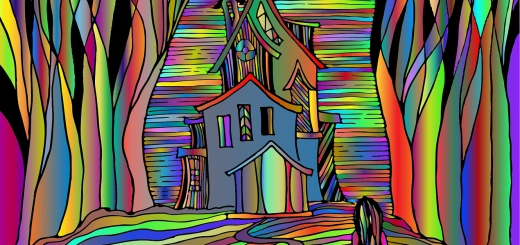The Truth About the Dark Ages You Didn’t Learn in School

Looking for more amazing products? Check out our online store and explore our collection here! Happy shopping!
Before diving in, please note: This post is for informational purposes only. If you’d like to know more about how we approach topics, feel free to check out our friendly Disclaimer Page.
Hey there, amazing readers! 
We’re committed to delivering quality posts, and your support (even just sticking around despite the ads) means everything to us. So, bear with us, and thanks for helping us keep the good vibes rolling. Now, on to the fun stuff!
TRANSLATE BUTTON AT THE END OF THE ARTICLE
A Quick Overview
The term "Dark Ages" conjures images of a gloomy, regressive time in history, filled with ignorance and superstition.
But what if I told you that this era, roughly spanning from the 5th to the 15th century, is not what it seems?
In school, we often skimmed over this time, painting it as a period marked by chaos and decline.
However, there’s a lot more to this story.
Let’s dive into a more colorful narrative of this fascinating age, exploring its art, culture, innovations, and the everyday lives of its people.
The Dark Ages: A Misunderstood Period in History
The term "Dark Ages" was popularized by Renaissance thinkers who viewed the Middle Ages as a time of cultural stagnation following the fall of the Roman Empire.
But this label is misleading.
The years following Rome’s collapse were far from void of progress; they were dynamic and complex.
The notion of the Dark Ages suggests a complete stop in advancements.
Yet, this period saw the growth of new kingdoms, the spread of Christianity, and significant shifts in societal structures.
The fall of Rome didn’t equate to a total breakdown of civilization.
Instead, it led to the rise of feudal systems and the establishment of new power dynamics across Europe.
Population movements during this time were significant.
The migrations of various tribes, including the Goths, Vandals, and Franks, shaped the political landscape.
These tribes brought unique customs and ideas, which would eventually blend into what we now recognize as medieval culture.
Moreover, the so-called "Dark Ages" weren’t uniform across Europe.
Different regions experienced varying levels of stability and development.
For instance, while Northern Europe might have faced turmoil, areas like Byzantium continued to thrive, preserving and enhancing classical knowledge.
In summary, the Dark Ages should be seen as a period of transformation rather than mere darkness.
It was a time filled with challenges but also rich in opportunities for rebirth and innovation.
Debunking the Myth of the ‘Dark’ Ages
One of the biggest misconceptions about the Dark Ages is the idea that people were purely superstitious and ignorant.
While it’s true that many beliefs of the time seem strange to us now, this era was not devoid of rational thought.
Think of it as a time when people were grappling with new ideas and reconstructing their worldviews.
Many early medieval thinkers laid the groundwork for later philosophical and scientific advancements.
For example, St.
Augustine and St.
Thomas Aquinas, both of whom lived during this time, made significant contributions to theology and philosophy that would influence Western thought for centuries.
Additionally, the establishment of universities in the 12th century marked the beginning of organized education in Europe.
Places like the University of Bologna and the University of Paris emerged during this time, showcasing that the thirst for knowledge was very much alive.
Furthermore, contrary to popular belief, literacy rates were not as dismally low as often portrayed.
The clergy and various monastic communities prioritized education, thus keeping written culture alive.
Manuscripts were copied, preserved, and sometimes even illustrated, demonstrating an appreciation for the written word.
Ultimately, when we strip away the myths surrounding the Dark Ages, a vibrant society emerges—one that was learning, evolving, and laying the groundwork for the future.
Art and Culture Flourished, Contrary to Belief
When I mention the Dark Ages, do you imagine gloomy castles and dreary peasants?
Well, let’s paint a different picture!
This era produced some remarkable artistic and cultural achievements that contradict the idea of darkness.
Take a moment to appreciate the intricate designs of illuminated manuscripts.
Monks dedicated themselves to copying texts, embellishing them with beautiful illustrations and gold leaf.
These manuscripts weren’t just books; they were works of art that preserved knowledge through the ages.
Architecture during this time also saw innovation.
The Romanesque style with its sturdy stone walls, rounded arches, and thick pillars marked a significant architectural evolution.
Cathedrals like St.
Sernin in Toulouse and the Abbey Church of Saint-Etienne in Caen are stunning examples.
They combined functionality with aesthetics, creating spaces that still inspire awe today.
Moreover, the rise of chivalric culture during this time influenced literature and storytelling.
The tales of King Arthur and the Knights of the Round Table emerged, blending history, myth, and moral lessons in captivating narratives.
Don’t forget about music!
The Dark Ages saw the development of Gregorian chant, a form of plainchant that shaped Western musical tradition.
The rich, melodic lines and spiritual content of these chants are still celebrated in religious ceremonies today.
In short, while the Dark Ages may not have been a Renaissance in the classic sense, they were a period of artistic richness and cultural growth.
Innovations and Inventions That Shaped the Era
You might be surprised to discover that the Dark Ages were marked by numerous innovations that would shape Europe’s future.
While we often associate invention with the Renaissance, many significant advancements took root during the early medieval period.
Agricultural innovations were crucial.
The heavy plow, for instance, made cultivating the northern European soil easier and more efficient.
This innovation allowed for increased food production, which ultimately contributed to population growth and urbanization.
The three-field system of crop rotation was another revolutionary technique.
By rotating different crops in three distinct fields, farmers could replenish soil nutrients and improve yields.
This method laid the foundation for sustainable agriculture in Europe.
The era also saw advances in architecture and engineering.
The use of ribbed vaults and flying buttresses in Gothic architecture, which emerged later, were rooted in techniques developed during the Dark Ages.
These innovations allowed for taller structures and larger windows, paving the way for the magnificent cathedrals we admire today.
Moreover, the invention of the mechanical clock in the late medieval period marked a turning point in timekeeping.
This innovation led to the establishment of a more structured daily life and societal organization.
Even in the field of navigation, advancements were made.
The magnetic compass began to spread to Europe, revolutionizing sea travel and trade.
In essence, the Dark Ages were a time of creative problem-solving and practical inventions that anticipated a brighter future.
Education Continued: Monasteries as Learning Hubs
You might imagine monasteries as quiet places of prayer, but they were also buzzing centers of learning.
When the Roman Empire fell, monasteries became bastions of education and scholarship, preserving knowledge through turbulent times.
Monks took on the responsibility of copying and preserving ancient texts.
They didn’t just copy religious manuscripts; they also transcribed works on medicine, philosophy, and science.
This preservation was crucial for maintaining the knowledge of classical antiquity.
The monastic schools aimed to educate young boys, often preparing them for the clergy.
These institutions emphasized not just religious instruction but also reading, writing, and arithmetic—skills that were necessary for the administration of church and state.
The influence of monastic education extended beyond the walls of the monastery.
Many scholars would go on to become teachers in emerging universities, bringing the knowledge they had gained into a broader academic setting.
In addition, some monastic communities initiated their own forms of research.
For example, the Benedictine monks were known for their agricultural experiments, and their findings significantly influenced farming practices throughout Europe.
Let’s not forget the importance of the Carolingian Renaissance, which took place under Charlemagne’s rule.
He promoted education and scholarship within monasteries, leading to a revival of learning and literacy across his empire.
So, when we think of the Dark Ages, we should certainly include the role of monasteries as key players in the preservation and dissemination of knowledge.
The Role of Women: Influential Figures Unveiled
Women often get overshadowed in historical narratives, but the Dark Ages had its share of influential female figures who left their mark.
While many may think of women as passive participants, history reveals a different story.
One of the most notable figures is Hildegard von Bingen.
This visionary abbess, composer, and writer made significant contributions to philosophy, medicine, and music.
Her works on natural history and medicinal plants are still respected today.
Another remarkable woman was Eleanor of Aquitaine, who was a powerful queen consort of both France and England.
Her influence shaped the political landscape of her time, and she played a pivotal role in the formation of the Plantagenet dynasty.
Nuns also held considerable power within monastic communities.
The convents often served as centers of education, allowing women to gain literacy and influence.
They could act independently in matters of land and resources, challenging the notion that women were completely subservient.
Additionally, the concept of courtly love emerged during this time, placing women in the role of beloved figures in literature and art.
This cultural movement highlighted women’s importance in shaping social ideals and relationships.
So, let’s give credit where it’s due!
Women in the Dark Ages were not just passive figures; they were key players influencing culture, politics, and education.
Trade and Economy: Bustling Markets and Connections
The Dark Ages might evoke images of isolated villages, but trade was actually flourishing.
The economy during this period was not as stagnant as we often perceive.
In fact, it was a time of growing markets and international trade networks.
With the rise of feudalism, local economies began to thrive.
Lords and vassals exchanged goods, services, and protection, leading to vibrant local markets.
Towns sprang up around castles and monasteries, serving as hubs for trade.
The establishment of fairs and markets became a big deal.
These events attracted merchants from far and wide, creating bustling centers of commerce.
People traded everything from textiles to spices, making these markets colorful and diverse.
The Viking Age, often associated with raids, also played a role in trade.
The Norse established extensive trade routes that connected Europe to the Eastern world, exchanging goods like fur, amber, and silver.
This exchange brought new cultural influences to the continent.
Moreover, the development of trade guilds laid the groundwork for more organized commerce.
These guilds regulated trade practices and protected the interests of their members, ensuring quality control and fair prices.
In short, the economic landscape of the Dark Ages was anything but dull.
It was a vibrant tapestry of trade, connections, and exchanges that would help set the stage for future economic growth.
The Rich Tapestry of Medieval Literature
When we think of the Dark Ages, literature might not be the first thing that comes to mind.
However, this period was rich in storytelling and poetic expression.
It laid a foundation for the literary traditions that would flourish in the centuries to come.
The oral tradition was alive and well during this time, with bards and storytellers sharing tales of heroism, adventure, and morality.
People gathered around fires to listen to epic poems, such as the Anglo-Saxon "Beowulf," which tells the story of a hero’s battles against monsters.
As literacy began to spread, written literature started to flourish.
Works were composed in various languages, including Latin, Old English, and Old French.
This diversity contributed to a rich literary landscape filled with unique voices and perspectives.
Chivalric romance emerged as a popular genre, celebrating ideals of knighthood and courtly love.
Stories featuring Arthurian legends became widely circulated, capturing the imaginations of readers and audiences alike.
Moreover, the rise of religious literature provided moral and spiritual guidance.
The writings of theologians and scholars helped shape religious thought and practice, influencing generations to come.
In essence, the Dark Ages were not a literary wasteland.
They were a time of rich storytelling and diverse voices that contributed significantly to the world of literature.
Science and Medicine: Progress Amidst the Shadows
The Dark Ages often get a bad rap when it comes to science and medicine.
But hold on!
This era saw significant advancements in various fields that would lay the groundwork for future discoveries.
Monastic communities became centers of medical knowledge, where monks studied ancient texts and practiced herbal medicine.
They compiled medical manuscripts that integrated Greco-Roman knowledge with traditional remedies.
The works of figures like Avicenna and Galen were translated and studied, keeping the flame of scientific inquiry alive.
These texts included valuable insights into anatomy, surgery, and pharmacology, influencing medical practices for centuries.
Furthermore, advancements in astronomy began to take root during the Dark Ages.
Scholars observed celestial bodies and created detailed records, paving the way for future developments in navigation and timekeeping.
In addition, technological innovations such as the heavy plow and windmills improved agricultural practices.
These advancements didn’t just enhance farming; they also contributed to better food security and overall health.
So, while it’s easy to assume that the Dark Ages were a time of ignorance, we should acknowledge the progress made in science and medicine.
The work done during this period was crucial for future generations.
The Crusades: More Than Just Battles and Conflict
The Crusades often evoke images of bloody battles and religious fervor.
But they were also complex events that reshaped Europe and its relationships with the Eastern world.
Let’s dig a little deeper into this multifaceted chapter of history.
The Crusades began as a response to the call for help from the Byzantine Empire as it faced threats from Muslim forces.
What started as a religious quest became a series of military expeditions that united thousands under a common cause.
While the Crusades were indeed marked by violence, they also facilitated cultural exchanges.
Crusaders returned to Europe with new ideas, technologies, and goods.
The introduction of spices, textiles, and knowledge dramatically influenced European culture.
Additionally, the Crusades sparked interest in the sciences and arts from the Islamic world.
Europeans became more aware of advancements in mathematics, medicine, and philosophy, leading to a gradual revival of learning.
Let’s not forget the impact on trade.
As connections between Europe and the East grew, so did commerce.
New trade routes emerged, and Italian city-states like Venice and Genoa flourished as commercial hubs.
Above all, the Crusades reshaped identities and narratives.
They fostered a sense of European unity, even as they highlighted the complexities of religious and cultural differences.
In summary, the Crusades were multi-dimensional events, contributing to both conflict and enlightenment in the Dark Ages.
Everyday Life: A Closer Look at Common Folk
So, what was life like for the average person during the Dark Ages?
Contrary to the knight-in-shining-armor stereotype, many lived simple yet meaningful lives.
Let’s take a stroll through the everyday experiences of common folk during this time.
Most people were peasants, working the land to provide for their families.
They toiled from dawn to dusk, cultivating crops and tending to animals.
Their lives revolved around the seasons, with harvest time being particularly important.
Despite the hard work, there were moments of joy and celebration.
Festivals marked the changing seasons, where communities would gather to share food, music, and dance.
These gatherings fostered a sense of community and provided a welcome break from daily labor.
Family life was essential.
People lived in close-knit households where extended family members often shared living spaces.
Children learned skills from their parents, preparing for their roles in the community.
Religion played a central role in everyday life.
The church was not just a place of worship; it was also a center for social gatherings and support.
People turned to their local priests for guidance in both spiritual and practical matters.
However, life wasn’t without its challenges.
The threat of famine, disease, and warfare loomed large.
Yet, communities often came together to support one another during tough times, showcasing resilience and solidarity.
Contrary to the notion of a dark and dreary existence, daily life in the Dark Ages was filled with struggles, joys, and a strong sense of community.
The Legacy of the Dark Ages: Foundations for the Future
The Dark Ages may not have been a period of pure darkness after all.
Instead, they laid the crucial groundwork for the developments that followed in the Renaissance and beyond.
Many of the cultural, artistic, and intellectual pursuits from this era directly influenced the Renaissance.
The art, literature, and philosophy that emerged during the Dark Ages would eventually find renewed appreciation and exploration.
The establishment of universities and centers of learning during this time set the stage for the academic revival in later centuries.
Scholars continued to build on the knowledge preserved by monastic communities, leading to advances in various fields.
Politically, the feudal system, while often criticized, established a new social order that enabled the rise of nation-states.
This structured hierarchy paved the way for the emergence of modern governance systems.
Moreover, the trade routes established during the Dark Ages laid the foundation for a vibrant economy.
The connections formed with the East brought not only goods but also ideas that would continue to shape European culture.
As we reflect on the Dark Ages, it’s essential to recognize their contributions.
This period was one of transformation, resilience, and the forging of new identities.
The legacy of the Dark Ages is alive today, echoing through art, literature, and societal structures.
Conclusion
In wrapping up this exploration of the Dark Ages, it’s clear that this period is far more nuanced than the label suggests.
The era was filled with innovation, cultural richness, and societal transformation that laid the foundation for future advancements.
So, the next time the term "Dark Ages" pops up, remember it’s about time we shed that old narrative.
Let’s celebrate the vibrant tapestry of life, art, and progress that flourished during these centuries.
History is far more interesting than we were led to believe in school, and the Dark Ages are a testament to that idea.

The Enlightenment Journey is a remarkable collection of writings authored by a distinguished group of experts in the fields of spirituality, new age, and esoteric knowledge.
This anthology features a diverse assembly of well-experienced authors who bring their profound insights and credible perspectives to the forefront.
Each contributor possesses a wealth of knowledge and wisdom, making them authorities in their respective domains.
Together, they offer readers a transformative journey into the realms of spiritual growth, self-discovery, and esoteric enlightenment.
The Enlightenment Journey is a testament to the collective expertise of these luminaries, providing readers with a rich tapestry of ideas and information to illuminate their spiritual path.
Our Diverse Expertise
While our primary focus is on spirituality and esotericism, we are equally passionate about exploring a wide range of other topics and niches 

To ensure we provide the most accurate and valuable insights, we collaborate with trusted experts in their respective domains 
Our blog originally focused on spirituality and metaphysics, but we’ve since expanded to cover a wide range of niches. Don’t worry—we continue to publish a lot of articles on spirituality! Frequently visit our blog to explore our diverse content and stay tuned for more insightful reads.
Hey there, amazing reader! 
Check out our store here and take a peek at some of our featured products below! Thanks for being awesome!











